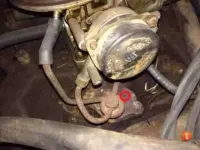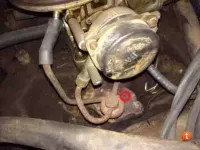Odd Vacuum Setup on MC2100
007
Crazy Sr. Respected Jeeper
- Posts
- 3,451
- Media
- 5
- Solutions
- 1
- Thanks
- 64
- Location
- Reno, NV
- Vehicle(s)
- 1977 CJ-7 Renegade (Daisy Jane), Levis trim, 304, TH400, BW1339 (MM), D30/Auburn Max, AMC20/Detroit/G2's, 4.88's, 33" BFG MT KM2's, Edelbrock Performer intake, Holley Sniper 4bbl EFI, MSD6, MSD ProBillet distributor, OME shocks, 4" ProComp lift.
Can anyone explain what this is and what I need to do to fix mine since it's broke? Notice the difference in the next two pictures.


Here's a little better view of how it's plumbed up in the back of the choke mechanism.

Sent from my iPhone using Tapatalk


Here's a little better view of how it's plumbed up in the back of the choke mechanism.

Sent from my iPhone using Tapatalk



